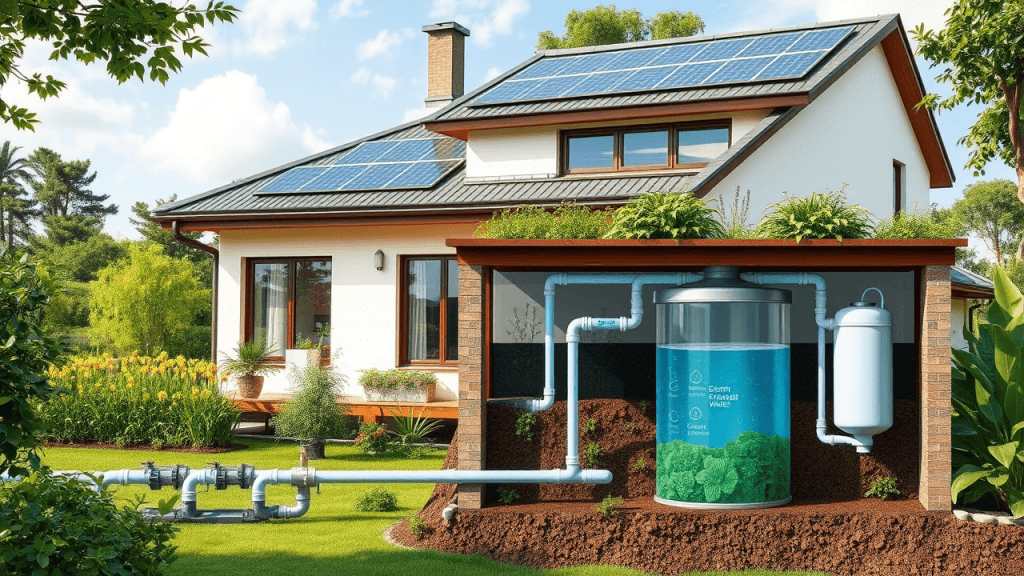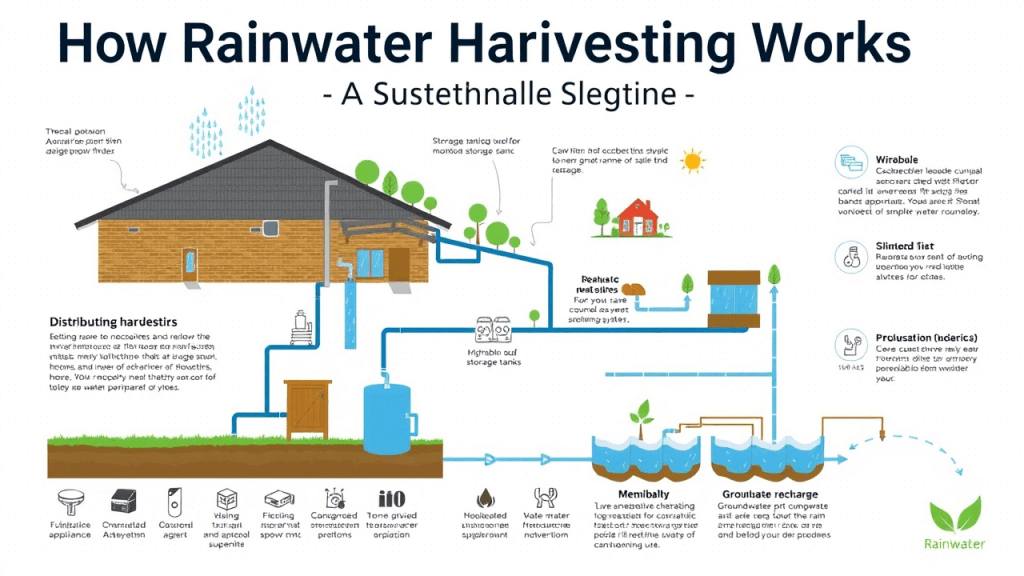Introduction

Harvesting rainwater for aquariums is becoming increasingly popular among fish enthusiasts seeking natural, cost-effective water sources for their aquatic ecosystems. Not only does rainwater collection reduce your environmental footprint, but it also provides numerous benefits for your aquarium inhabitants. Many tropical fish species naturally thrive in soft, slightly acidic water conditions—precisely what rainwater offers. This comprehensive guide explores everything you need to know about collecting, treating, and using rainwater in your aquarium, helping you create a more natural habitat while potentially improving the health and coloration of your fish.
Why Consider Rainwater for Your Aquarium?
Rainwater offers several distinct advantages over tap water for aquarium use:
- Zero chlorine and chloramines – unlike municipal water supplies, rainwater doesn’t contain these fish-toxic chemicals.
- Naturally soft water – Rainwater typically has low mineral content, making it ideal for species that prefer soft water conditions.
- Cost-effective solution – After initial setup costs, rainwater is essentially free, potentially saving hundreds on water conditioning products annually.
- Environmentally friendly – Harvesting rainwater reduces dependence on treated water and lowers your carbon footprint.
- pH advantages – With a slightly acidic pH (usually 5.5-6.5), rainwater mimics the natural habitat of many tropical fish species.
Essential Equipment for Rainwater Collection
Setting up an efficient rainwater collection system requires:
- Collection surfaces – Clean roofs (ideally metal) or dedicated collection panels
- Gutters and downspouts – To channel water to storage
- First-flush diverters – Critical for eliminating initial contaminated runoff
- Storage containers – Food-grade plastic barrels or dedicated rainwater tanks
- Filtration system – Both mechanical and biological filtration components
- UV sterilizer (optional but recommended) – For eliminating potential pathogens
Step-by-Step Rainwater Collection Process
1. Setting Up Your Collection System

Start by ensuring your collection surface is suitable—avoid asphalt shingles or treated woods that may leach chemicals. Install gutters that direct water to your storage container and, most importantly, include a first-flush diverter to eliminate the first few gallons of water that contain most contaminants.
2. Proper Storage Practices
Store collected rainwater in opaque containers to prevent algae growth. Position containers in a cool, shaded area to maintain stable temperatures. Most hobbyists recommend dedicated containers used exclusively for aquarium purposes.
3. Essential Treatment Methods
Even the cleanest rainwater requires treatment before aquarium use:
- Mechanical filtration – Use fine mesh filters to remove particulates
- Aging – Allow water to sit for 24-48 hours to stabilize
- UV sterilization – Highly recommended to eliminate potential pathogens
- Testing – Always test pH, ammonia, nitrites, and general hardness before use
Frequently Asked Questions About Rainwater for Aquariums

Is rainwater safe for all aquarium fish?
While rainwater is excellent for many species, particularly those from soft-water environments like tetras, discus, and bettas, it may require remineralization for African cichlids and other hard-water species. A 2021 survey of aquarium hobbyists found that 78% of those using rainwater reported improved coloration and breeding success in soft-water species.
How do I ensure rainwater is free from contaminants?
Beyond using first-flush diverters, regular testing is crucial. Consider testing for heavy metals if you live in industrial areas. Research indicates that urban rainwater may contain higher levels of pollutants than rural collections, so location-specific precautions are important.
Should I filter rainwater before using it in my aquarium?
Absolutely. At minimum, use mechanical filtration through fine mesh or sponge filters. For optimal safety, consider a three-stage approach: mechanical filtration, carbon filtration, and UV sterilization. This removes particulates, chemical contaminants, and biological hazards, respectively.
How long can I store rainwater for aquarium use?
Properly stored rainwater can last 1-3 months in sealed, opaque containers. However, for best results, use within 2-3 weeks of collection. Always test stored water before adding it to your aquarium.
12 Critical Reasons Why Aquarium Plants Die or Melt (And How to Save Them)
